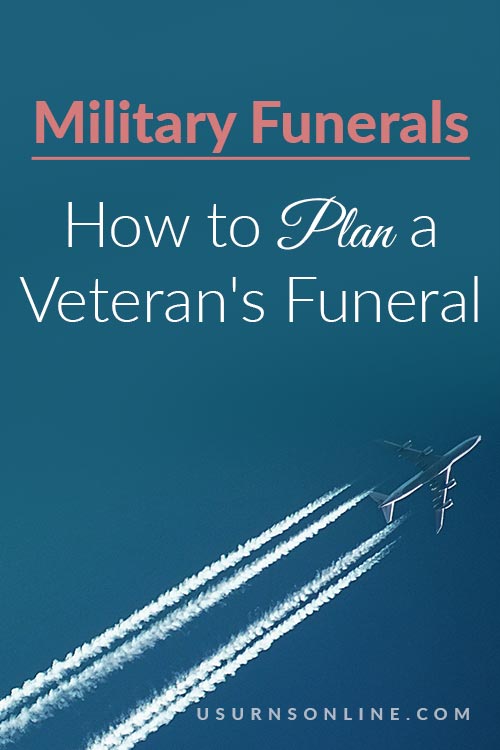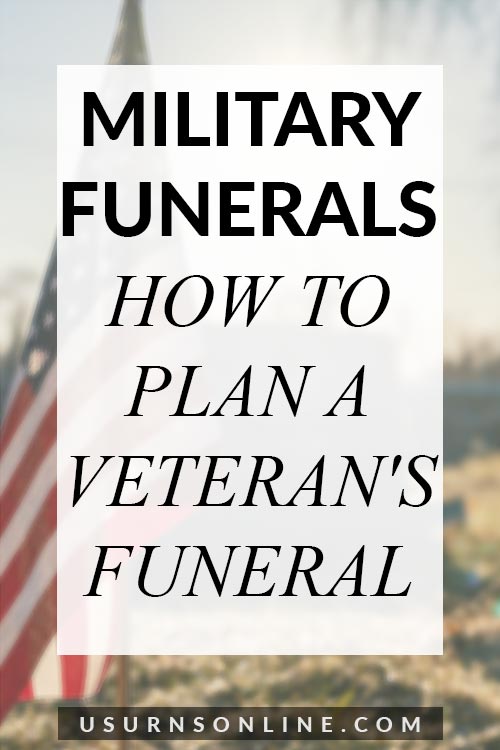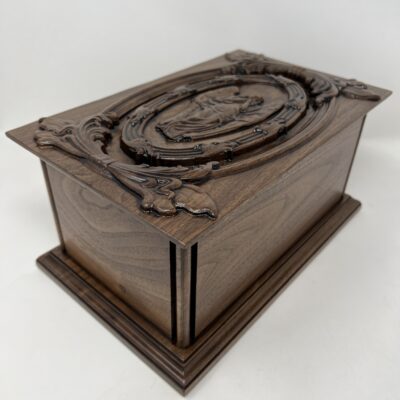Your beloved armed forces veteran has passed on. How do you plan the perfect funeral to honor his or her memory?
You probably have a lot of questions. How do you schedule a military funeral? Which papers need to be signed and submitted? Is there a specific protocol you need to follow? Who is going to help you with all the government forms?
Read on, and I will walk you through the ins and outs of scheduling a military funeral.
How to Plan a Veteran’s Funeral
A military funeral is the pinnacle of respect for a serviceman or woman. You can celebrate your veteran by arranging their military funeral.
Please remember, your loved one has earned this honor!
1. Check for Burial Benefits
You will make decisions for your veteran’s burial or cremation at the funeral home. The funeral director can tell you what the Veteran’s Administration (United States Department of Veteran’s Affairs) will pay for, or you can read our guide to VA burial benefits.
2. Choose a Good Funeral Home
A funeral director at any funeral home can help the family apply for burial benefits. If you prefer, you can fill the forms out yourself and take them to the funeral home.
The VA is not going to “offer” anything that you don’t request. Hopefully, you and your veteran had opportunities to discuss benefits.
Honor your loved one’s wishes of burial or cremation. He/she can have a military funeral complete with honors with either choice.
Read more: How to Choose a (Great) Funeral Home
Urns Made in the USA
3. What Does the VA Pay For?
I will be using the terms gravesite, grave, and buried. But keep in mind that your loved one can also be cremated and placed in a niche or buried in the ground. The niche for cremated remains is above ground.
A veteran buried in a National Cemetery is entitled to:
- A burial site in any of the 135 National Cemeteries in 42 states and Puerto Rico.
- The opening and closing of the grave
- A standard concrete grave liner
- A government headstone, marker, or niche plaque
- Standard honors
- A burial flag
- A Presidential Memorial Certificate
- Perpetual care of the grave and cemetery
The veteran has earned this. You will not incur costs burying your veteran at a National Cemetery.
A veteran not buried in a National Cemetery is entitled to:
- The VA reimbursement of up to $796 for a burial plot.
- A government headstone or marker
- Standard honors
- A burial flag
- A Presidential Memorial Certificate
4. Schedule the Burial at a National Cemetery
Here’s what you’ll need to do for burial at a National Cemetery:
- Supply the funeral director with the DD214. These are the veteran’s discharge papers. A veteran must be honorably discharged to be buried in a National Cemetery.
- Decide on which National Cemetery or State Veteran’s Cemetery to lay your veteran to rest.
- Contact the National Scheduling Office. The funeral director will do the scheduling for you. It is important to remember that the cemetery may not have an opening for the day and time you want. You should have two to three dates and times to give to the National Cemetery Scheduling Office. They adhere to a very tight schedule. Please arrive at the time your funeral director has arranged. If you are late, the cemetery will skip your loved one’s service and go on to the next veteran’s funeral.
At your request, your funeral director can schedule a military chaplain and honors. Believe it or not, some families choose not to have honors at the funeral. I have never understood that decision, but it is theirs to make.
Your funeral director will tell you a lane number and a time to be there.
5. Let Friends and Family Members Know Your Plans
- Lastly, once the burial service is scheduled, tell your friends and family the lane number and time to be there. Please encourage them to be prompt. You can notify them by phone, text message, social media, or with a printed invitation.
What Happens at a Military Funeral?
National Cemeteries do not conduct the service at the actual gravesite. The service is conducted at a committal shelter or pavilion. These structures are permanent and set up throughout the cemetery.
- The funeral director will let the cemetery representative know once you’ve arrived.
- The cemetery representative will discuss the paperwork with you. You will sign off on the correct information.
- Everyone will wait in their vehicles, in the designated lane.
- When the scheduled time arrives, the cemetery representative will lead the procession.
- The hearse will travel behind the cemetery representative, with the next of kin behind.
- The hearse will stop at the pavilion.
- As the hearse arrives, the honor guard will salute.
- The funeral director and assistant will place the casket upon the church truck (a collapsible aluminum bier on wheels).
- Your veteran’s casket will be placed at the front of the pavilion.
- The service will begin. If you didn’t request a military chaplain, you may choose to have readings by a friend or family member. Or ask a clergy member of your loved one’s faith.
- The Honor Guard will conduct military honors.
- The service will end, typically with a playing of Taps.
- A cemetery representative will dismiss friends and family.
- The casket will be taken to the gravesite and buried.
- Families are encouraged to return later in the day to visit their loved one’s gravesite.
You can contact the cemetery directly and find out when the headstone will arrive. The gravestone setting is no cost to the family.
Thank you to all of our servicemen and women! You deserve all of our honor and respect for what you have given to our country.
Read Next: Best Military Memorial Gifts
Pin It






My Dad was an honorably discharged USMC veteran. I was with my mom when we made his arrangements and at NO TIME were we told about his benefits. We paid for everything! We were not offered the presence of a Military Honor Guard. It broke my heart to see how the two funeral directors did a very sloppy job of folding his burial flag. Taps was not played…today it just makes me mad!
I recently attended my uncle’s funeral…USAF veteran. It was closed casket and the burial flag was not put onto his casket until right before we left for the cemetery. The folded flag was on top of the casket during the funeral but was folded very sloppily. The American Legion provided Taps, 21 gun salute, and final folding of the flag.
My best friend’s husband, another U.S. veteran was buried two weeks ago. There were two young airmen present, Taps was played, no gun salute, and they had a very difficult time getting the flag folded properly.
My own husband, a USAF veteran and member of the American Legion died in 2007. The funeral director was a friend of his. He was cremated before the funeral and the flag was folded beautifully and placed next to his urn and a bouquet of red roses on the altar.
He wanted to go into a mausoleum in the National Cemetery in his hometown. However, they didn’t have space at that time. We did go there for the commital service. The burial detail unfolded his flag carefully and refolded it and presented it to me. He got the 21 gun salute and Taps was played. Afterwards his ashes were returned to the funeral home’s vault. When I moved back to my home state I was informed there was a State Veterans Cemetery opening in a few months and at that time had his ashes mailed to me.
I did not have a graveside service. My family had been with me at his funeral. I invited two dear friends to join me as his ashes were placed in the mausoleum niche. After cemetery personnel closed the niche we sat together in from of his niche and talked.
I know this is very long but I wanted to let you know that protocol is not always followed regarding Veterans funerals. Maybe through ignorance of the survivors, maybe they’re not getting the information they need.
My Dad was proud of his service. We were taught how to fold the flag before we were teens . My mom paid the bill as it was presented…but it’s the principle my Dad earned those benefits by putting his life at risk!
BTW…it seems to me that funeral directors and their employees should be educated in how to fold a burial flag. As I said, I was taught as a preteen. It’s not hard and it should be a symbol of respect for the veteran and his/her family
Thanks for your comments, Fran! That is very helpful to hear. And that’s why we think it is important for people to learn for themselves the options that are available to them, and the standards which they should expect. Thank you again, and thanks to your family for their service!